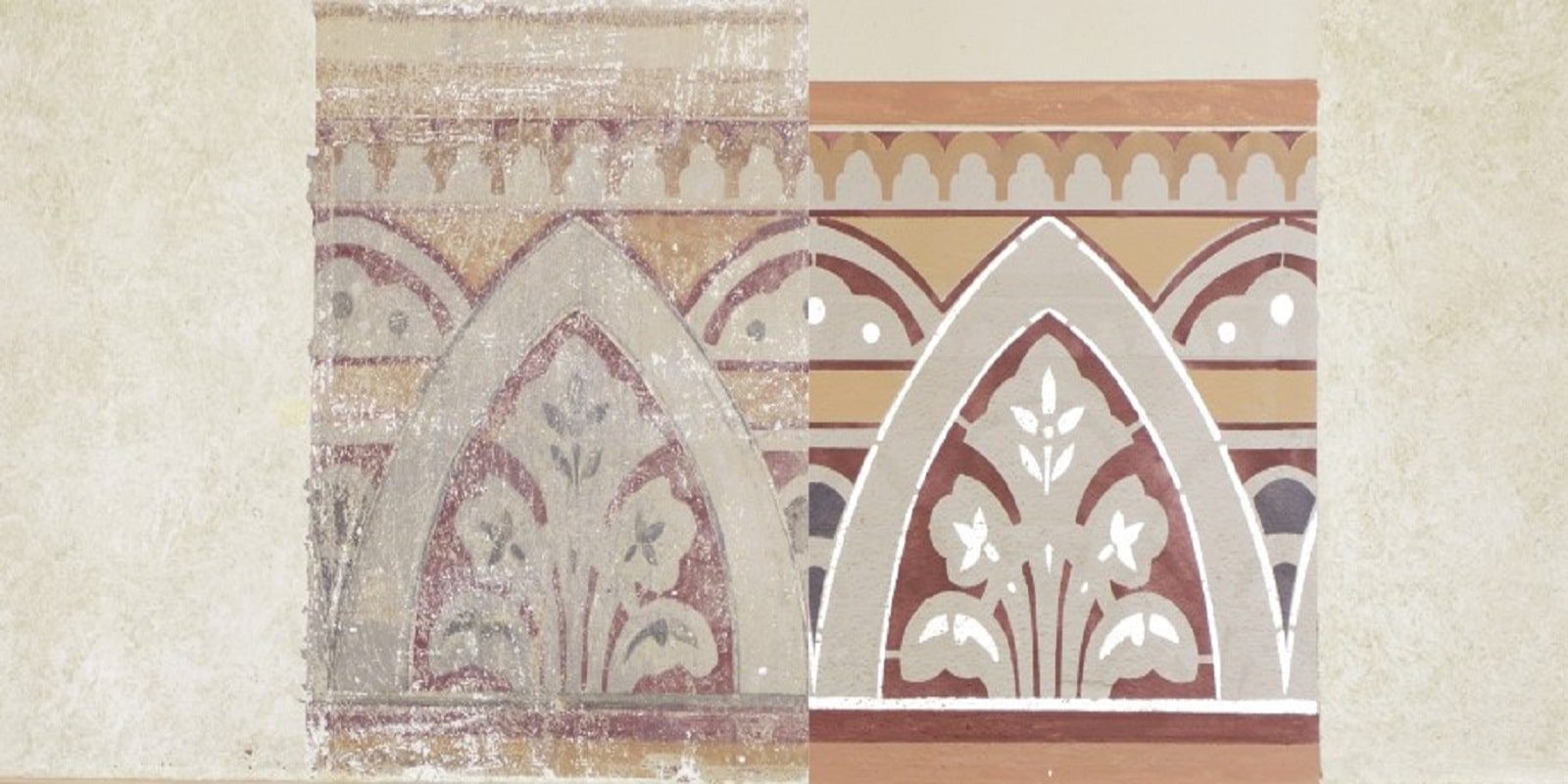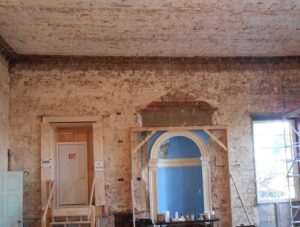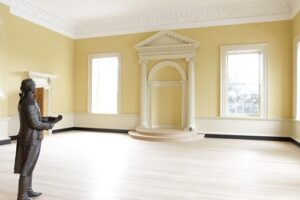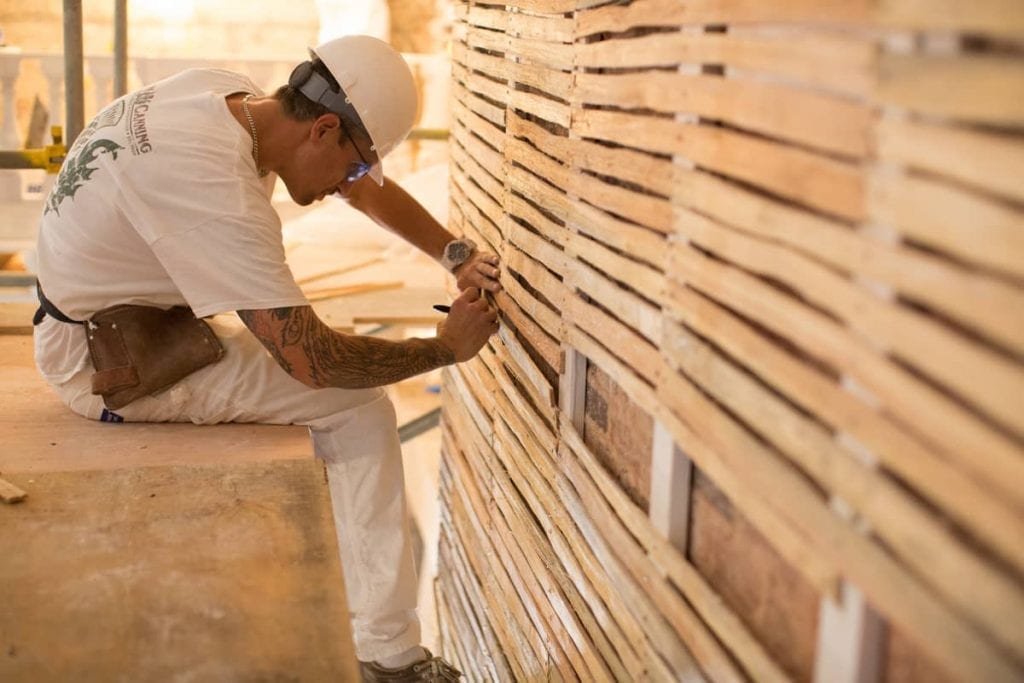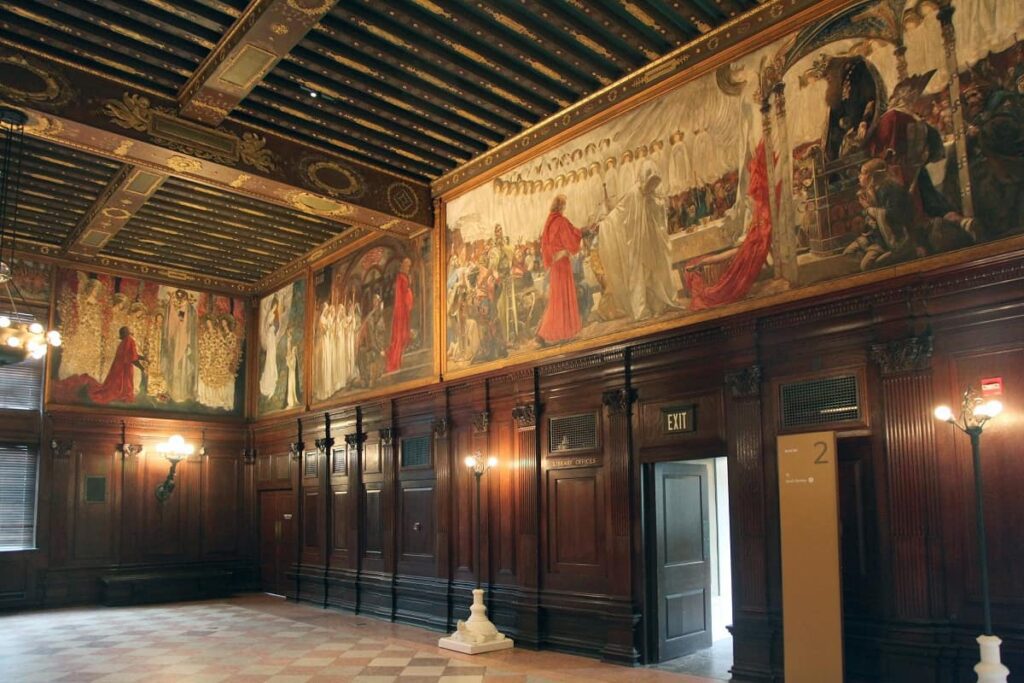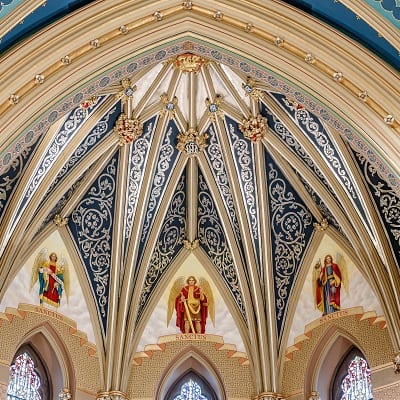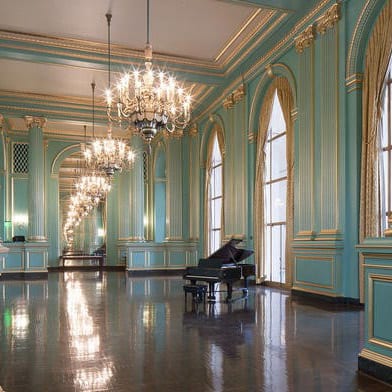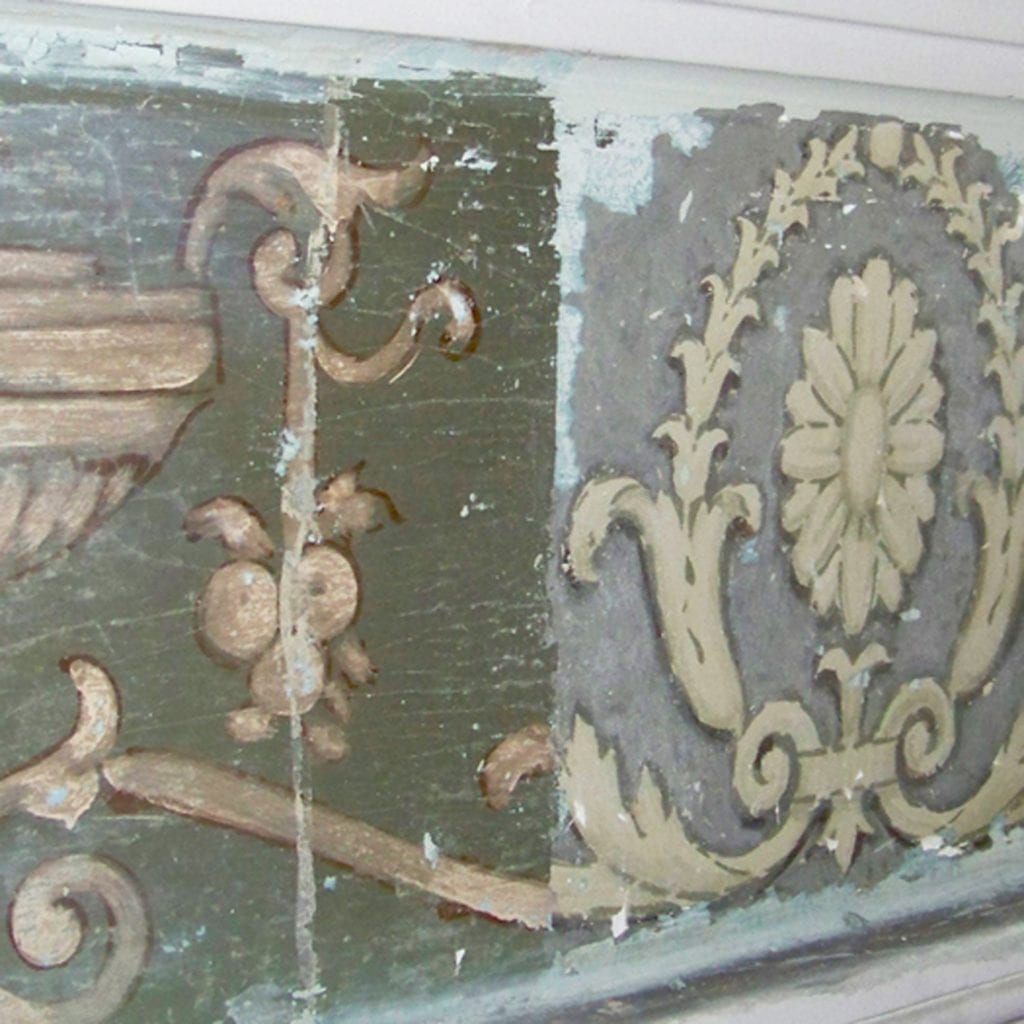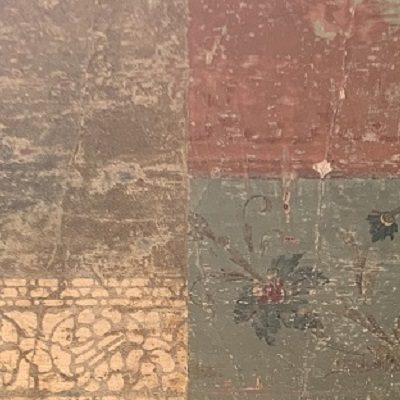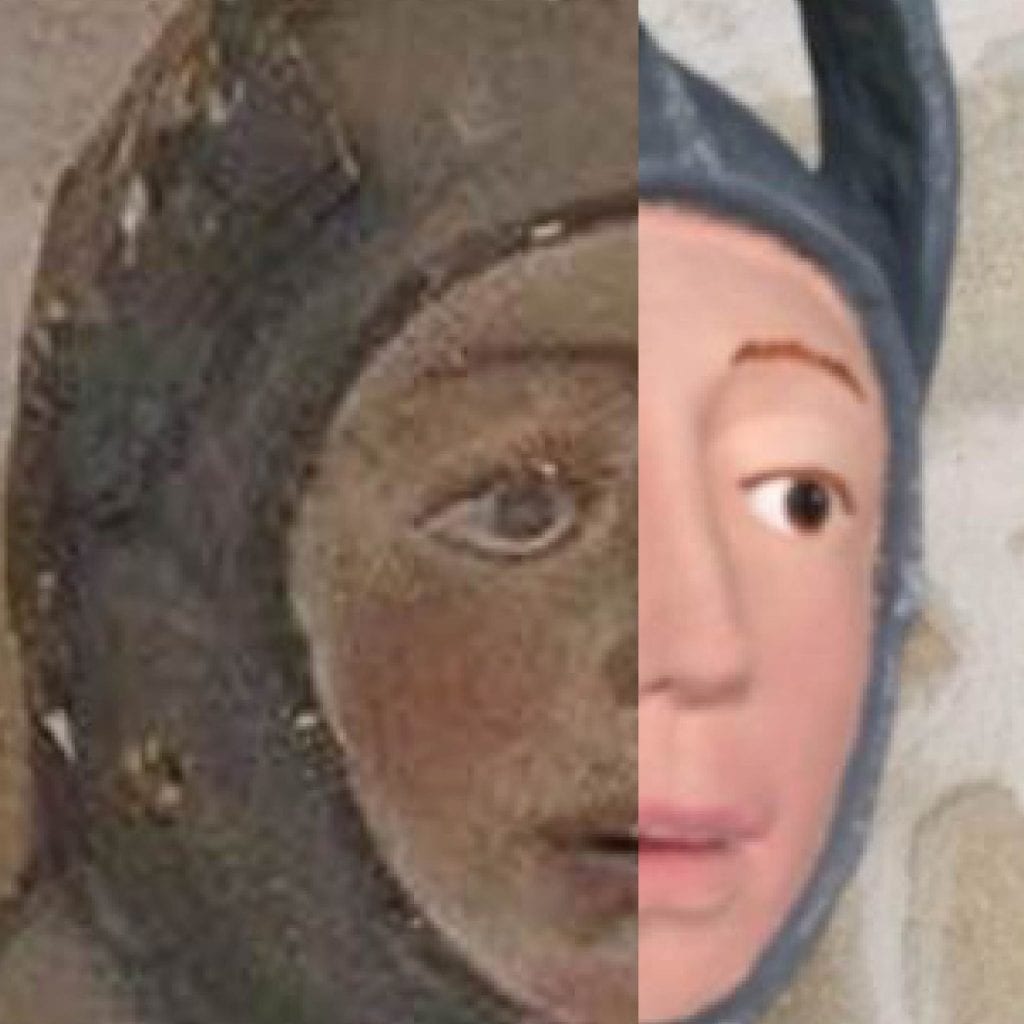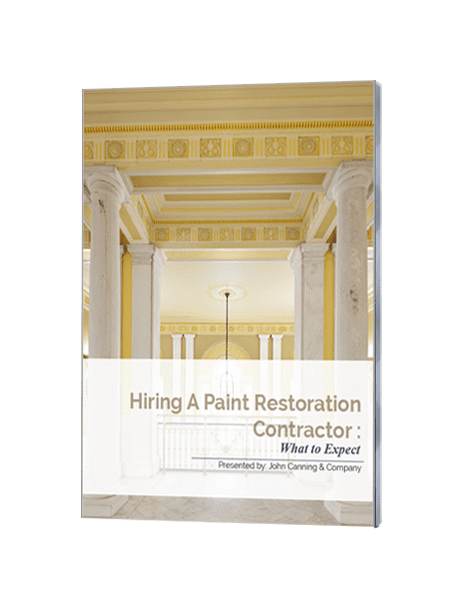Throughout history, architectural painting is an important part of the record we use to understand a culture’s appreciations and beliefs. Whether it is a wall mural or a non-decorative coat, paint has, and always will be, instrumental to the proper finish and attractiveness of a building. However, paint can fade and peel, requiring its refinishing and restoration. In order to preserve the original beauty of a historic building, it is necessary to keep a few factors of paint restoration in mind.
Types of Historic Paint
Generally, there were originally two types of paint utilized for the interior in historic homes: Oil-based paint and water-based paint. The type of paint is determined by the medium which holds its mixture together. As the names imply, one is composed of oil and the other of water. These two mediums have different effects on the paint’s overall composition and presentation. Water-based paint is most adequate for indoor applications due to its delicate stability and water solubility. Oil-based paint, which is durable and scrubbable can provide a glossier finish to an indoor room, most notably on molding and trim. Water-based paint is commonly used on plaster, because of its vapor permeability while oil-based paint is used for coating wood substrate.
When analyzing and restoring traditional paint, certain steps should be followed:
Step 1 – Paint Investigation
Archival Research
It is important to understand the original context of the materials and intention in the building’s design. Look for documents that may contain a detailed record of the original paint job or original photographs of the spaces in question. The paint investigation project team does archival research before touching the historic paint so as to get a proper knowledge of how the original process was executed and to understand where important decoration might be. This allows for them to stay in theme with the intended look of the original décor and allows for them to use the necessary tools and paint to best restore the original surface.
Paint Exposures and Analysis
The next step of paint investigation in a historic building is the removal of paint in selective areas. Delicate removal of the outer coats of paint can provide a look into the building’s past. Elaborate murals and decorative design which could still be of value are often hidden under numerous coats of more recent paint. Although it is tempting to simply strip and re-coat the top layer of paint, it is important to peel back multiple layers to see if there are designs which can be preserved. The process of removing the outer coats of paint to reveal the original design is called finish exposure. Uncovering the originally intended décor of a building in hopes of preserving it is a preferred and longer lasting option of refurbishing a building than that of just applying a new protective layer of paint.
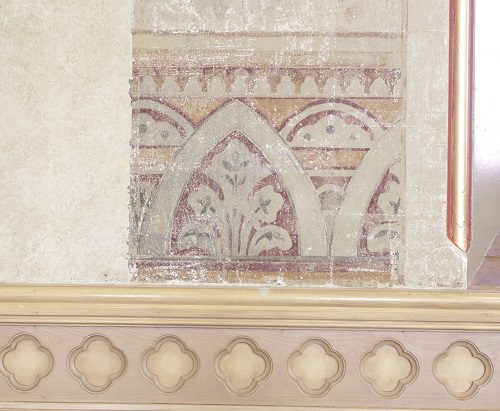
Original Paint Unveiled Through Finish Exposure
Because the paint in historic buildings is layered over time, it is important to inspect the history of the building so that you have a clear understanding of the kinds of paint used. This will tell you the composition and color of the original paint and will allow you to accurately create a uniform coat throughout the area you are painting. Multiple processes to examine paint and its qualities so as to best provide help with restoring historic buildings can be employed during the paint analysis process. For information on the different techniques of paint analysis visit more of our blogs on paint.
Interpretation & Recommendations:
Collecting the data itself is not enough for the restoration team to implement the proper materials into their project. The information obtained from the archival research and paint exposure must be interpreted in order to understand the necessary elements for a proper restoration process. It is the responsibility of the firm to advise the client as to the steps needed for the paint restoration based on the data from research. Without the interpretation and consultation from trained artisans, the information derived by the paint analysis is rendered useless. For more information on the process of paint analysis and data interpretation, visit our services page.
Step 2 – Restoration
Before any paint restoration can be done, the substrate must be assessed and restored if necessary. A sound substrate whether wood, plaster, or canvas, is required to perform a proper paint restoration. It is most common to see plaster as the substrate for historic buildings. An understanding of the existing conditions and proposed materials will play a key role in the long-term success and durability of the finishes. Compatibility of new materials to existing will require research and trial.
Plaster Restoration
It is most common to see plaster as the substrate for historic buildings. When restoring the traditional paint, it is crucial to also restore any damaged plaster beneath the original coat. Lime plaster is preferred over other plasters for restoration due to its versatility and adaptiveness. The formula and creation of lime plaster is simple. Through combining sand, water, quicklime, and animal hair, a plasterer can create a durable filament for any cracks or holes in the surface of a historic building. Due to its versatile and ductile composition, lime plaster can be applied in unique and beautiful ways. It is therefore important to have trained hands apply the material in a historic restoration to get the best result. Check out this blog for more information on how John Canning & Co. utilizes lime plaster.
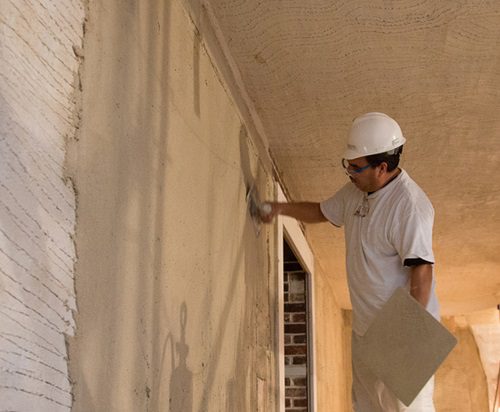
Plaster Scratch Brown Layer
Paint Restoration
Once the plaster substrate is patched and even, it is necessary to sand down any remaining flecks of plaster which could compromise the paint’s adherence to the wall. Depending on your intended result, there are different methods of painting to employ. If the project calls for painting matching original colors but not methods and materials, the paint analysis info can provide the commercial color match for any paint colors needed. If the project requires the use of traditional methods & materials (of the time period) to meet requirements and standards for the restoration project, paints might have to be made by hand by someone with the expertise and skill set.
Before and After – Paint Restoration – Old Senate Chamber, Maryland Statehouse
If the project requires decorative paint restoration, it is imperative to call in a decorative paint restoration expert so the original decorative details can be matched by trained artisans. Having someone without the knowledge and skills to implement decorative painting often results in cartoonish and amateurish looking decorations.
During the restoration process, certain techniques can be utilized such as infilling to alleviate issues like divots and paint stabilization to prevent original paint from completely peeling off the wall. Out Paint Restoration: Process & Techniques blog has information on major restoration barriers and their solutions.
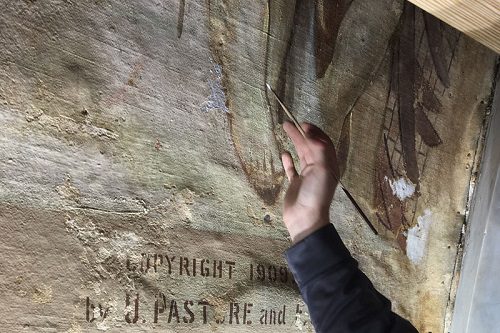
Infilling Divots in Original Paint
Restoring traditional paint in historic buildings can be a complex process and it is recommended that you enlist the assistance of a historic finishes’ consultant, often a trained and experienced fine arts or materials conservator. A historic finishes consultant can help guide you through the process and perform the necessary investigations and conditions assessments to achieve a high-quality restoration for the paint of your historic building. As expert historic finish consultants, John Canning & Co. can assist in all stages of pre-construction and planning including historic building conditions assessments, historic paint analysis/investigations, finish assessments and plaster surveys. If you have a restoration project you would like to discuss, contact us today.

